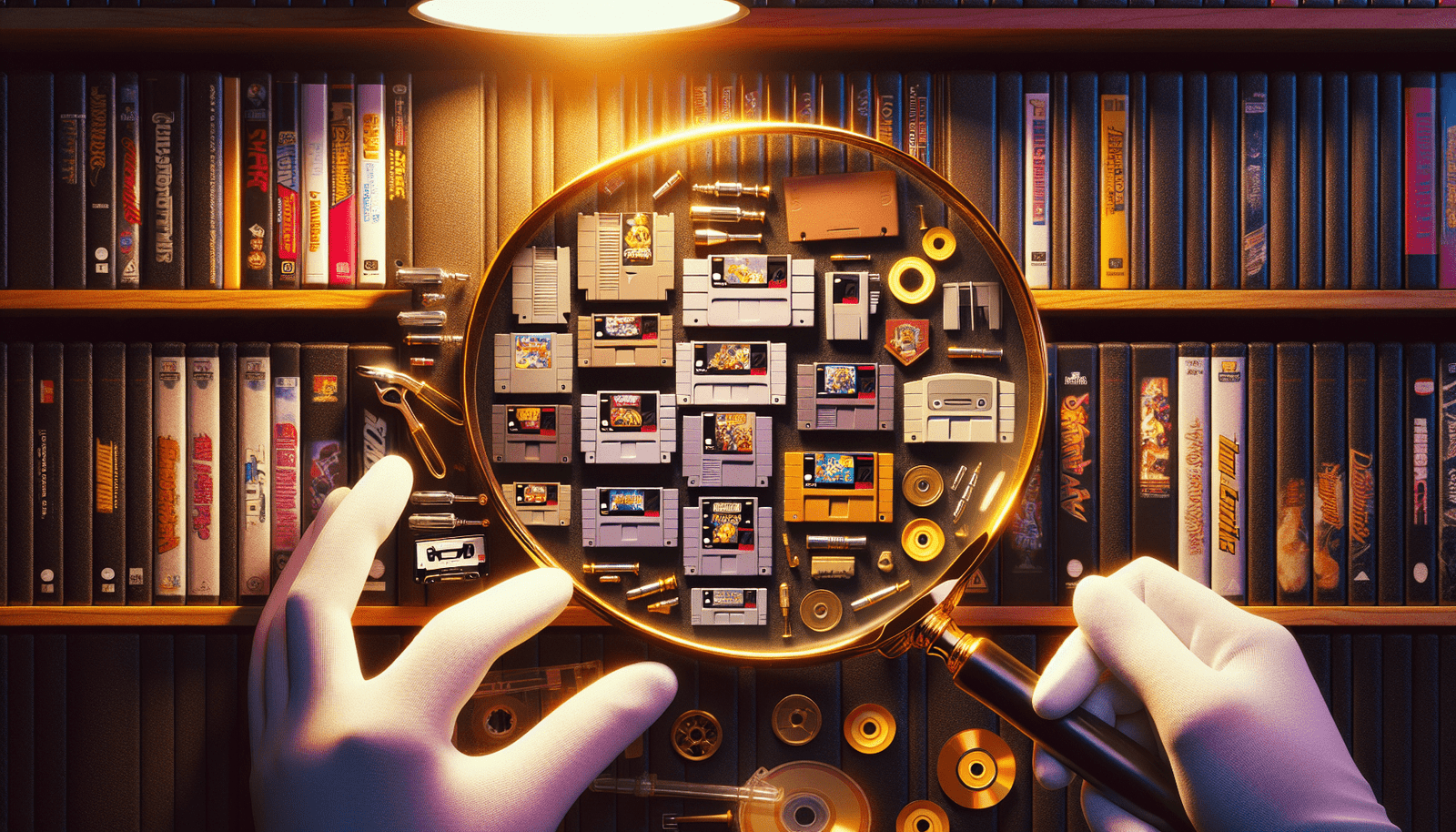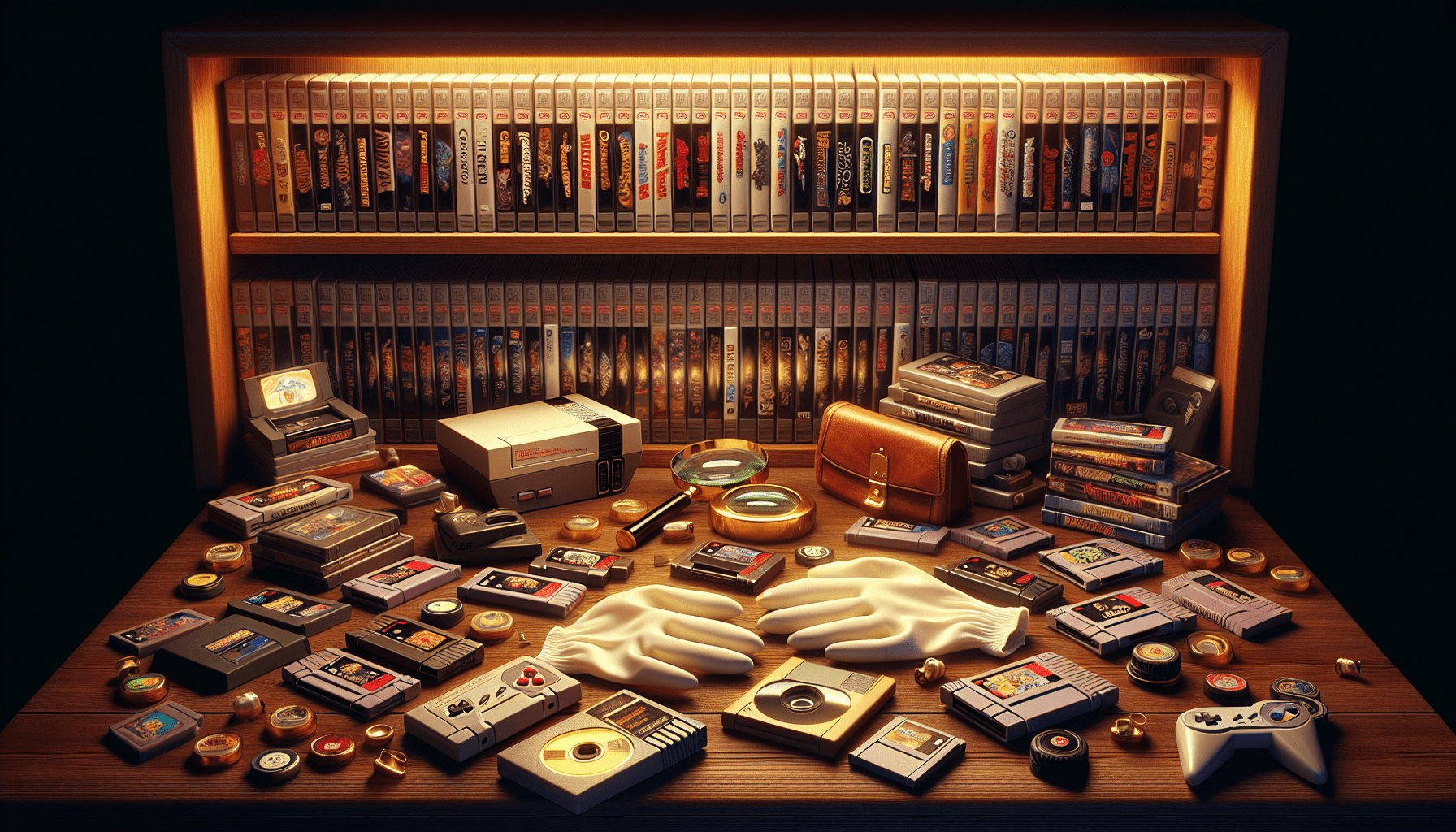Professional Techniques for Crafting a Game Collection Preservation Strategy: Is preserving a treasured game collection a straightforward task? When considering the myriad complexities involved, the answer is likely “no.” In the digital era, where gaming seems ephemeral, ensuring the longevity of a physical game collection is both daunting and meticulous. This discussion will explore professional techniques for crafting an effective game collection preservation strategy. The approach not only safeguards your collection against physical and digital decay but also enriches it as a cultural and historical artifact.

Table of Contents
Understanding the Importance of Game Collection Preservation
Video games have become more than just a form of entertainment; they are a significant part of our cultural heritage. As with books or films, preserving video games ensures future generations will have access to these cultural icons. The need to preserve games goes beyond nostalgia—it’s about maintaining the integrity of our shared digital history.
The Value of Games in Cultural Context
Video games are often hailed as a narrative art form. They are storytelling devices intertwined with technology, capturing the zeitgeist of their times. Game preservation enables us to study these digital artifacts, providing insights into societal trends, technological advancements, and artistic expressions. The social and educational value of games emphasizes the necessity of their preservation.
Challenges in Video Game Preservation
Preserving games involves unique challenges not faced by other media forms. The issues extend from technological obsolescence to license restrictions. Understanding these obstacles is crucial for devising a comprehensive preservation strategy. Factors such as hardware deterioration, digital rights management (DRM), and evolving media formats complicate the preservation efforts, demanding innovative solutions.
Historical Background: The Evolution of Game Preservation
Game preservation dates back to the early 1980s when hobbyists and archives made initial attempts to save digital content from disappearing. The journey began with enthusiasts copying data onto various media forms to prevent loss. This effort laid the groundwork for the sophisticated preservation methods used today.
Milestones in Game Preservation
Several landmark events have shaped game preservation. The establishment of dedicated museums and archives, like the National Videogame Museum in the UK and Video Game History Foundation, underscored the growing recognition of video games’ cultural value. Meanwhile, advancements in digital archiving technologies have continually expanded the boundaries of practical preservation techniques.
The Role of Community in Preservation
Community efforts have been crucial in advancing game preservation. Grassroots projects have enriched our understanding of preserving digital content. These initiatives often involve collaboration between developers, players, and historians, fostering a culture of preservation consciousness. It is through these collective endeavors that significant strides have been made.

Key Concepts in Game Collection Preservation
In designing a professional game preservation strategy, several key concepts must be considered. These concepts span both physical and digital mediums, ensuring a comprehensive approach to tailored preservation needs.
Emphasizing Physical Preservation
While digital is the domain of our times, physical games hold intrinsic value. The emphasis on physical preservation involves safeguarding cartridges, discs, and related artifacts against environmental damage. Proper storage conditions, handling techniques, and environmental controls are vital components of this defensive strategy.
The Importance of Digital Preservation
Digital preservation involves ensuring the accessibility and integrity of games stored on digital platforms. With the shift toward digital distributions, this aspect of preservation encompasses safeguarding digital rights and ensuring playable copies are retained for future use.
Legal and Ethical Considerations
Legalities can often complicate preservation efforts. Understanding copyright and licensing issues is essential. An ethical approach considers intellectual property rights, focusing on legally permissible methods to maintain games. An informed understanding of these aspects can prevent potential legal disputes during the preservation process.
Step-by-Step Guide to Crafting a Game Preservation Strategy
Creating a game preservation strategy is a methodical process. By addressing major considerations systematically, one can ensure the collection’s long-term preservation and accessibility.
Analyzing the Collection
Begin by assessing the current state of the game collection. Take inventory of games, categorize them by type and condition, and identify which require immediate attention. By understanding the scope of the collection, one can make informed decisions on preservation priorities.
Selecting Appropriate Storage Solutions
Storage solutions vary based on whether games are physical or digital. For physical games, consider controlled environments that mitigate risks from humidity, temperature fluctuations, and light exposure. Utilize archival sleeves, climate-controlled storage, and protective cases to maintain them in optimal condition.
Digital Backups and Migration
Digital games require a robust backup strategy. Regular backups to cloud services or external storage prevent data loss due to hardware failure or accidental deletion. Furthermore, consider the technological evolution—digital migration to newer platforms ensures longevity against software obsolescence.
Software Duplication and Emulation
Software duplication involves creating working copies of games, while emulation allows games to be played on different platforms than originally designed. Emulation ensures that even as hardware becomes obsolete, the games remain accessible. This shift relies on reliable emulation software and legally sourced game data.
Cataloging and Documentation
Ensure that each game in the collection is meticulously documented. Maintain records of game metadata, including release information, developer insights, and historical context. This documentation will facilitate easier management and future research, offering a comprehensive understanding of its significance.
Collaborating with Preservation Communities
Consider tapping into the wealth of knowledge available in preservation communities. Collaboration with like-minded individuals or organizations can provide fresh insights, shared resources, and access to cutting-edge techniques. Such engagement can build a robust support network that aids in sustaining long-term preservation goals.

The Role of Visuals and Case Studies in Preservation
Visuals and case studies are instrumental in demonstrating the practical application of preservation theories. They bridge the gap between theoretical strategies and real-world implementation, providing tangible examples of successful preservation efforts.
Utilizing Instructional Visuals
Instructional videos or infographics illustrating various preservation steps enhance understanding. Visuals can demonstrate the correct methods for handling physical games or creating digital backups, making the process more accessible to enthusiasts and experts alike.
Learning from Successful Case Studies
Examining case studies of successful preservation strategies can be highly instructive. These examples offer valuable lessons on overcomes challenges and achieving desired outcomes. By studying these instances, one can glean insights applicable to their preservation endeavors.
Conclusion
Crafting a robust game collection preservation strategy is an intricate task that requires careful planning, technical understanding, and community involvement. By incorporating both historical context and modern preservation techniques, collectors can ensure that their treasured collections remain a part of the cultural lexicon for future generations to explore and appreciate. As technology continues to evolve, adapting these strategies to meet new challenges will be key to safeguarding our digital heritage.

Preserving History – How to Take Care of Your Retro Game Strategy Guide Collection
Preserving Vintage Perfume Bottles: Expert Tips and Techniques

